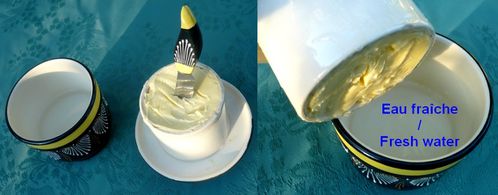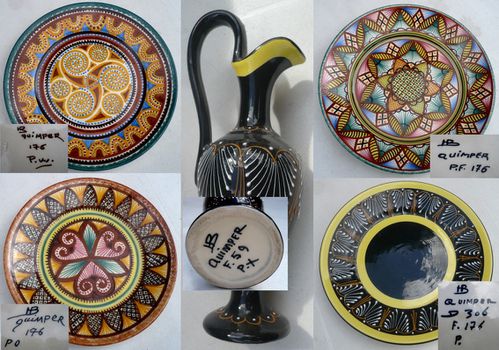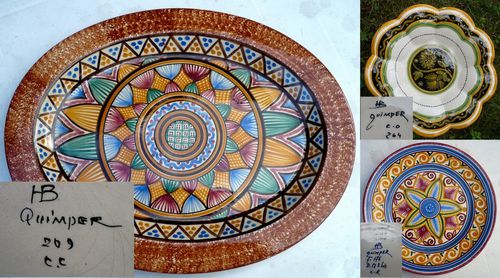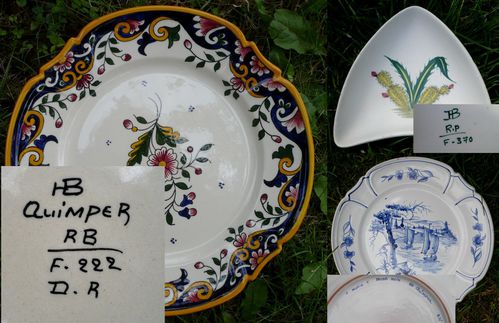Voici une série d'articles consacrée une fois encore aux marques de Quimper. Cette fois-ci il s'agira de présenter certaines marques utilisées par la manufacture De La Hubaudière après 1942 et jusqu'en 1983-1984, date de la fusion avec la manufacture Henriot.
Ces articles terminent l'annonce faite à la page 125 du 24 avril 2011 de notre blog sur les sujets en cours de préparation.
Ces articles doivent être rapprochés de ceux traitant d'autres périodes : HB Vatofeu étudié le 24 avril 2010, 1ère marque HB étudiée le 5 juin 2010, marque au triangle étudiée le 5 juin 2010, marque au poisson coupé étudiée le 22 novembre 2010, rééditions de marques HB le 5 décembre 2010, marques HB de 1917 à 1942 étudiées le 30 décembre 2010, marques d'objets publicitaires étudiées le 15 mai 2011 et enfin marques de magasins étudiées le 12 juin 2011.
Pour situer une pièce de faïence HB postérieure à 1942, le principale observation est la disparition du code Morse qui identifiait le décorateur (peinteuse ou peinteur) entre 1917 et 1942.
/
Here is a series of articles dedicated once more to the marks of Quimper. This time it will be a question of presenting certain marks used by the factory De La Hubaudière after 1942 and until 1983-1984, a date of the merger with the factory Henriot.
These articles end the announcement made for the page 125 of April 24th, 2011 of our blog on the subjects in the course of preparation.
These articles must be moved closer to those treating the other periods : HB Vatofeu was studied April 24th, 2010, 1st marks HB studied on June 5th, 2010, mark in the triangle studied on June 5th, 2010, mark in the cut fish studied on November 22nd, 2010, reeditions of HB marks on December 5th, 2010, mark HB from 1917 till 1942 studied on December 30th, 2010, marks for advertising objects studied on May 15th, 2011 and finally marks of stores studied on June 12th, 2011.
To place an HB earthenware subject later( 1942, main observation is the disappearance of the Morse code which identified the decorator (peinteuse or painter) from 1917 and until 1942.












